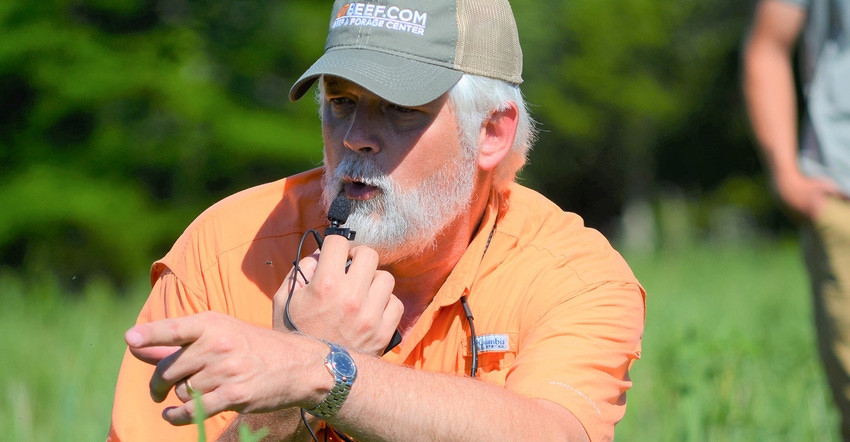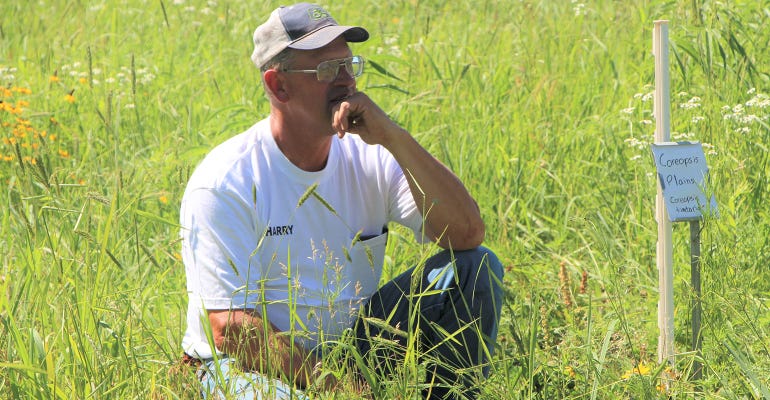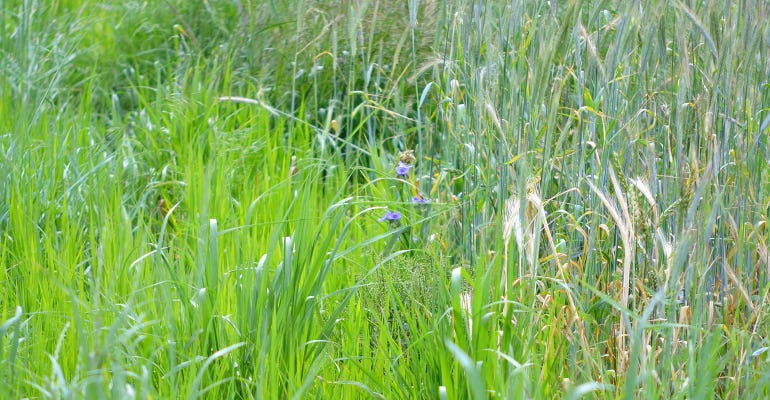
To passers-by, it may appear to be a pasture that got way out of hand with its tall weeds and flowers. But this lush field with hints of gold, purple and white peeking through as the wind blows provides cattle quality forage on the cheap.
“This is what we call diversified native planting,” Harry Cope shares with a group of 100 farmers standing in his pasture outside of Truxton, Mo. “There are warm-season grasses, quite a few cool-season natives and a smattering of the forbs.”
Now in its third year of production, the native pasture is Cope’s latest endeavor to move his farm program away from fescue and into more diverse forage mixtures.
Pasture problems
Missouri is in the part of the world dominated by tall fescue with nearly 17 million acres covering the state.
“It has its role, its place and its benefit, but also its liability,” says Pat Keyser, University of Tennessee professor and director for the Center for Native Grasslands Management. “Even though tall fescue gives a lot, it does not give a lot during summer, especially to cattle.”
Fescue quality goes down in the summer months, and cows simply don’t eat as much. “What you will see with cows on tall fescue is a reduction in intake, reduction in growth rate and reduction in cattle performance,” Keyser says. All that changes when grazing cattle on pastures seeded with native grass mixes.

SHARING INSIGHT: Montgomery County farmer Harry Cope is surrounded by native grasses. He made the switch three years ago to add more diversity to his fescue fields.

The difference is heat tolerance. “Native grass mixes will put up with summer, put up with the hot weather, put up with the drought year and still produce quality forage,” Keyser explains.
In Tennessee, the statewide average for fall fescue is 2.5 tons per acre. Keyser says University of Tennessee data show farmers yielding up to 5 tons per acre with native mixes.
Cattle performance also increased. Rate of gain was double to triple when grazing natives compared with tall fescue, Keyser says. Producers backgrounding found steers put on 200 to 250 pounds per head in a 90- to 100-day grazing season in the summer at 26 cents per pound gain. “That is pretty good,” Keyser says.
Increase in tonnage and improvement in cattle performance is all coming at a relatively low price.
Economical solution
“I am a cheap farmer,” Cope says. “I do not spread nitrogen or fertilizer under any circumstance. That is one thing about these natives, they are a low-nitrogen system, but that does not mean a low-production system.”
Still, there is an upfront cost to native grass establishment. Keyser says it runs about $200 per acre. Burndown will take two passes — one in the fall and another in early spring — at $30 per pass. Native grass seed mixes sell for $120 per acre.
Farmers can buy an awful lot of fescue seed for $200, he admits, but with natives, there is no need for lime or fertilizer. There also are no extra fuel costs.

MORE FORAGE: A mix of warm-season and cool-season grasses, along with forbs, fill the pasture that was once a cropland.

Keyser contends natives are “the cheapest forage to grow” with a 20-year return on investment. “These are perennials, which means no replanting,” Keyser says. “With proper management, they should still be around.”
The transition to native grass pasture was made even more feasible for Cope with cost-share programs. He found resources from the USDA Natural Resources Conservation Service, Quail Forever, and the U.S. Fish and Wildlife Service. After only three years, Cope says he will continue to transition acres with or without the cost share.
“The part that impresses me is the amount of feed we got from it,” Cope says. “We also graze earlier and a lot later than what I used to think. These plants will tolerate it; just make sure they get the rest they need.”
For Keyser, native grass pastures are a forage tool that just makes a lot of sense. “It is low input, no fertilizer and increases cattle performance,” he says. “It is a win for producers.”
About the Author(s)
You May Also Like






